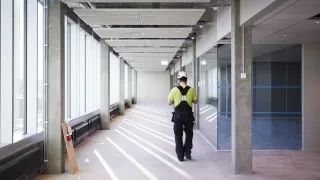Finnish Institute of Occupational Health media release, February 9 2022
The Finnish Institute of Occupational Health studied whether the modelling of work processes is an effective way to develop nuclear plant maintenance work. Three processes were modelled in the research project: responding to failures, planning alteration work and developing reporting processes.
The results were positive. The modelling of work processes improved the personnel’s shared understanding of daily work routines and its development needs.
Nuclear plant operations have certain features that make it particularly important that there is a shared understanding of daily routines. In safety-critical environments, processes need to be clear and secure from interruptions. The personnel must know how to use new and conventional technologies.
“Participative methods support changing the culture towards a more developing approach. That is what safety is about: transparency, joint activities, overcoming challenges, making complex things simple,” says Research Professor Anna-Maria Teperi from the Finnish Institute of Occupational Health.
It is important to reinforce shared understanding of work processes in the event of a change
Modelling work processes is very useful in reducing interruptions, improving quality and flow of work and promoting co-operation and flow of information.
“The study showed that the goals of certain processes were a little unclear, which had troubled maintenanceengineers. The concrete operational model lead by a third-party instructor helped highlight the needs for development in a constructive manner,” says Senior Advisor Arja Ala-Laurinaho from the Finnish Institute of Occupational Health.
In safety-critical industries, it is particularly important to ensure that the personnel has a shared understanding of the work processes and how they interact with each other. The need for this is particularly important whenever changes take place: for example, if the organization changes or a new technical device is taken into use.
The guide published as part of the research project provides the prerequisites to model various work processes.
“Joint development is sometimes considered to be cumbersome and time consuming. I would like to challenge the management of workplaces to consider whether participative working practices are suitable for their daily work routines. Considering the potential benefits, the investments will pay off many times over,” says Anna-Maria Teperi.
Participative Development for Supporting Human Factors of Safety (PARSA)
- The Finnish Institute of Occupational Health modelled various work processes related to nuclear plant maintenance in the research project.
- VTT Technical Research Centre of Finland was also involved in the research project.
- The project was funded by the SAFIR2022 research programme.
- Read the final report: Participative development for improving nuclear safety – results and implications of three methods in nuclear maintenance work (julkari.fi)
- Learn more about the guide: Työprosessin mallintaminen työn yhteisen kehittämisen välineenä (in Finnish, julkari.fi)
- Learn more about the project: The participative development for supporting-human factors of safety (PARSA) | Finnish Institute of Occupational Health (ttl.fi)
For more information, please contact
- Research Professor Anna-Maria Teperi, Finnish Institute of Occupational Health, anna-maria.teperi [at] ttl.fi (Anna-Maria[dot]Teperi[at]ttl[dot]fi), +358304742371
- Senior Advisor Arja Ala-Laurinaho, Finnish Institute of Occupational Health, Arja.Ala-Laurinaho [at] ttl.fi (Arja[dot]Ala-Laurinaho[at]ttl[dot]fi), +358304742516





